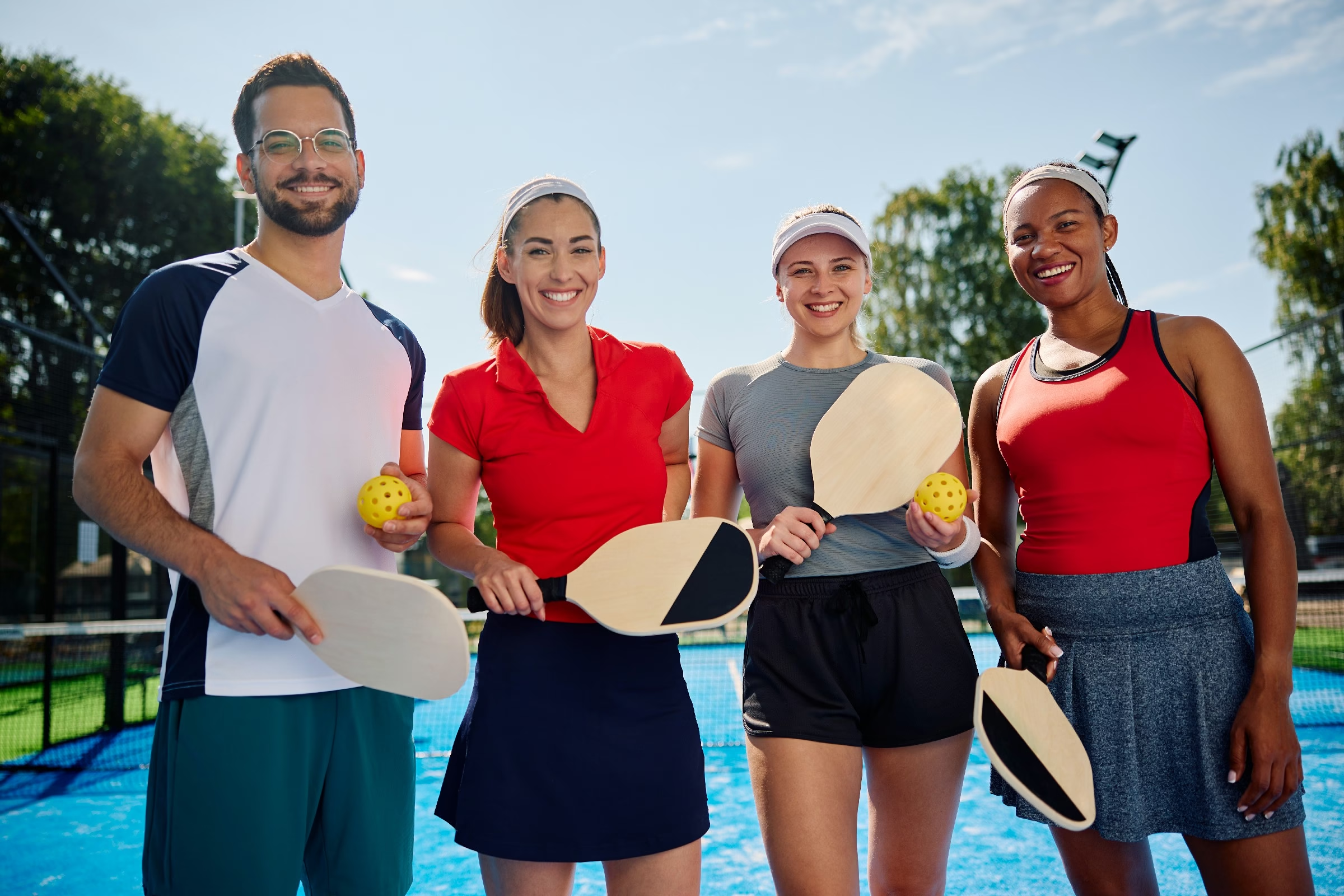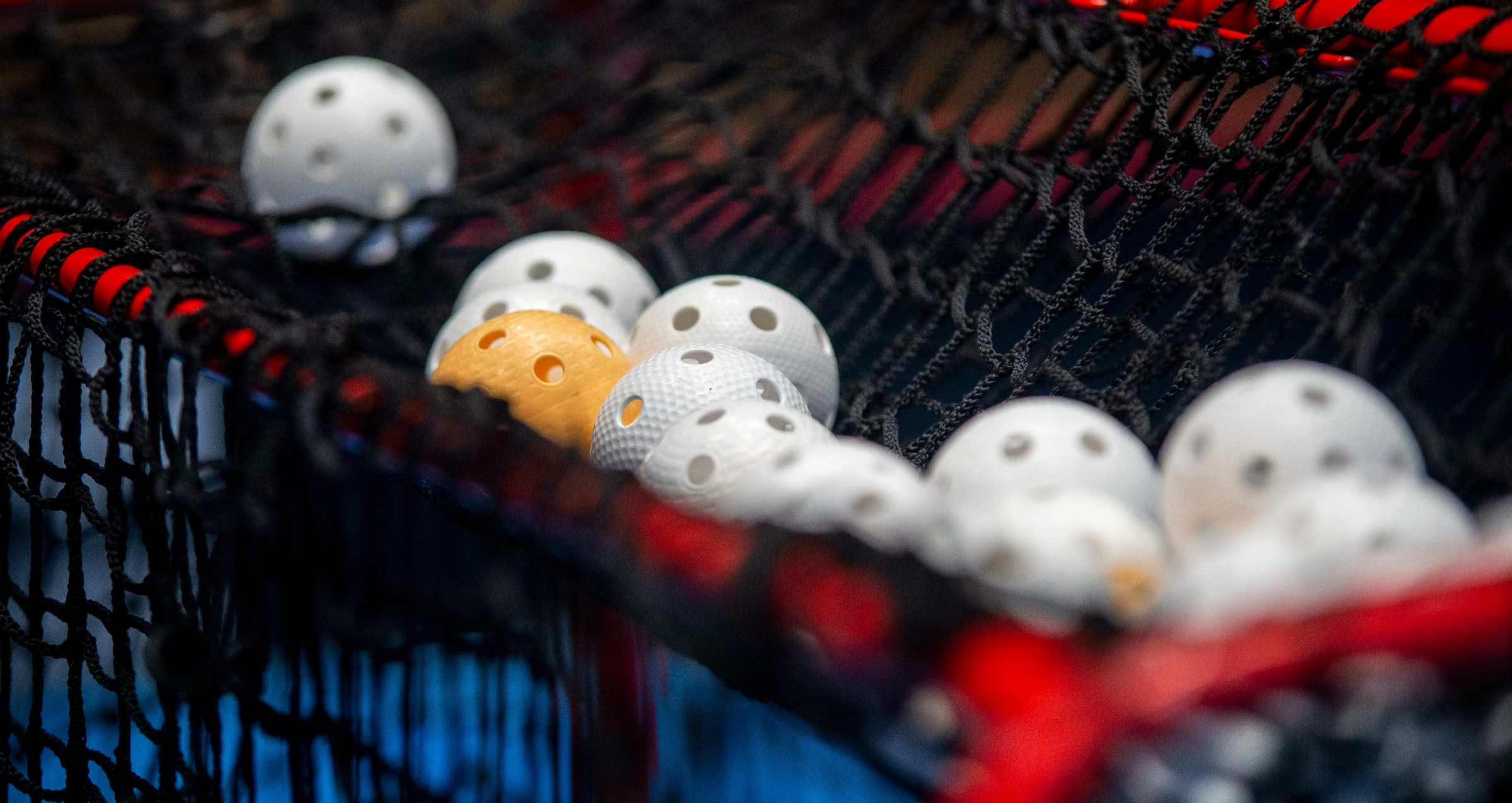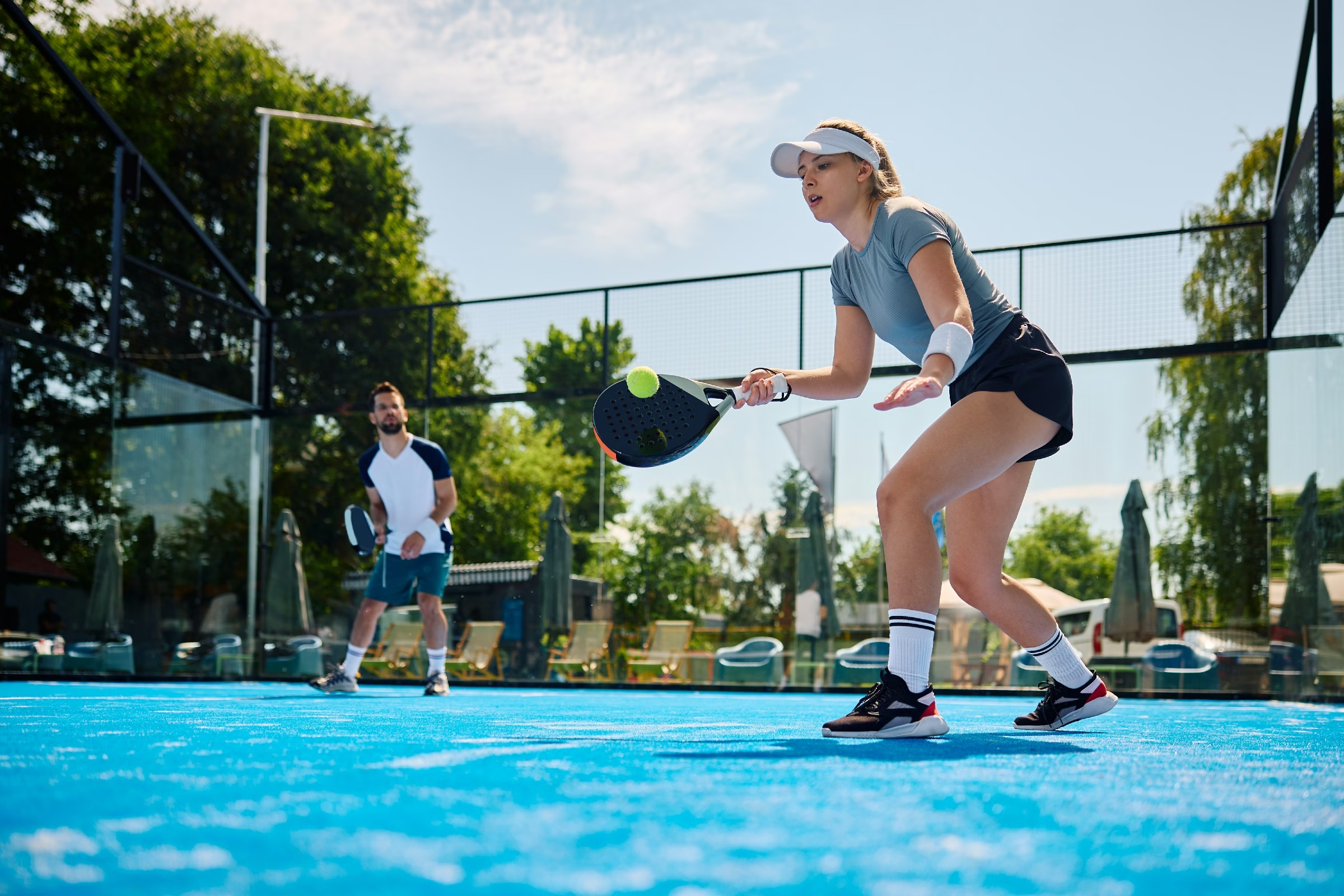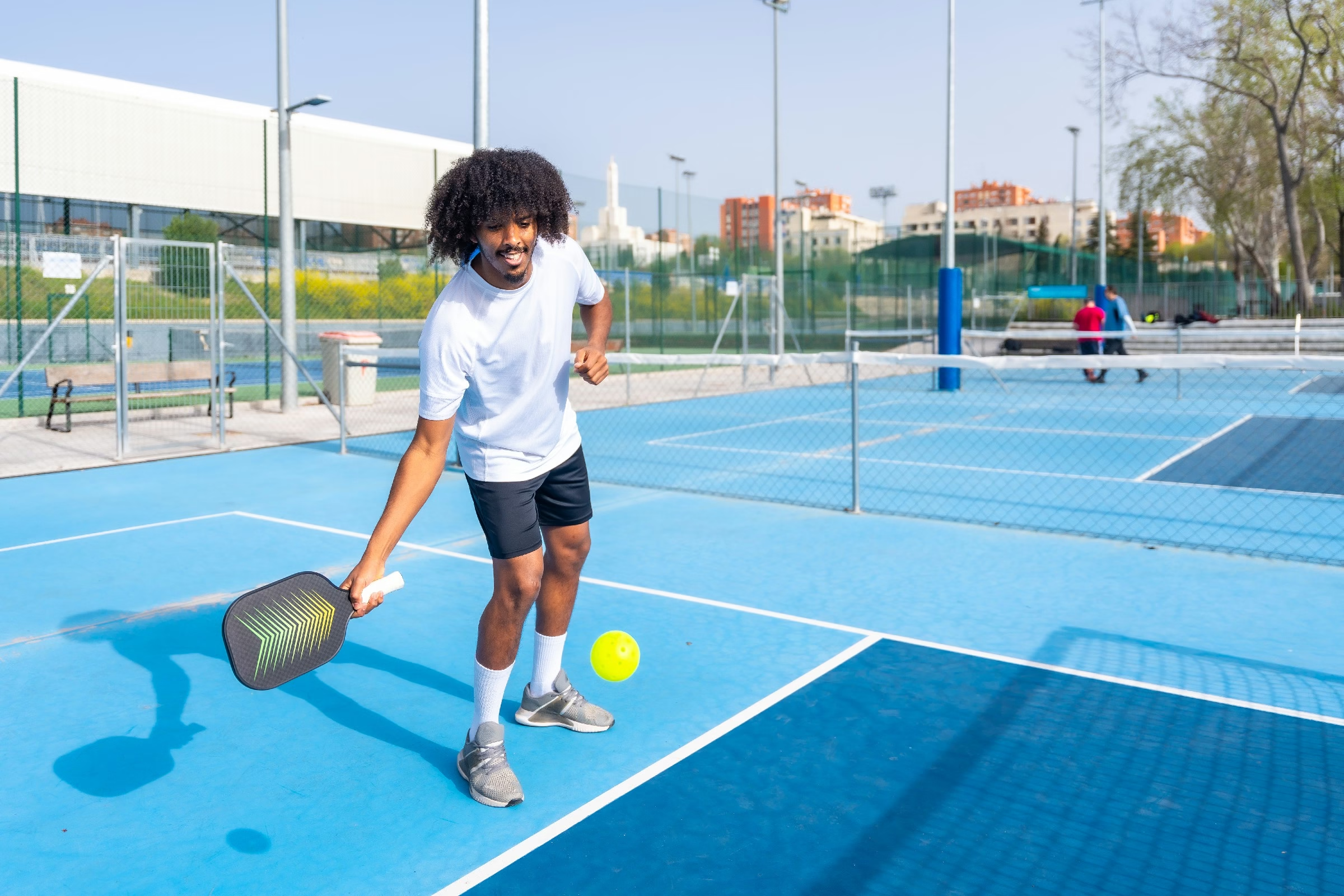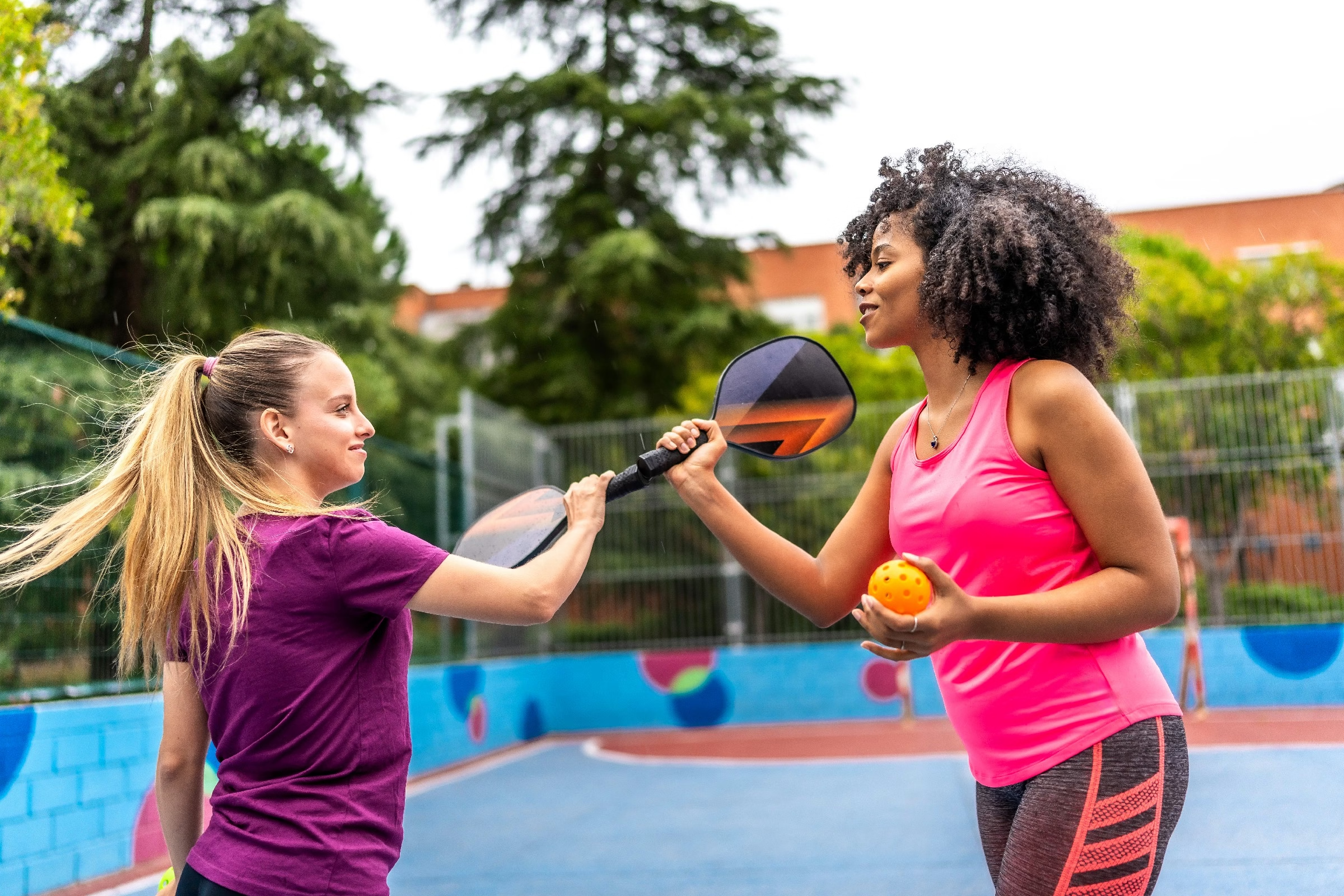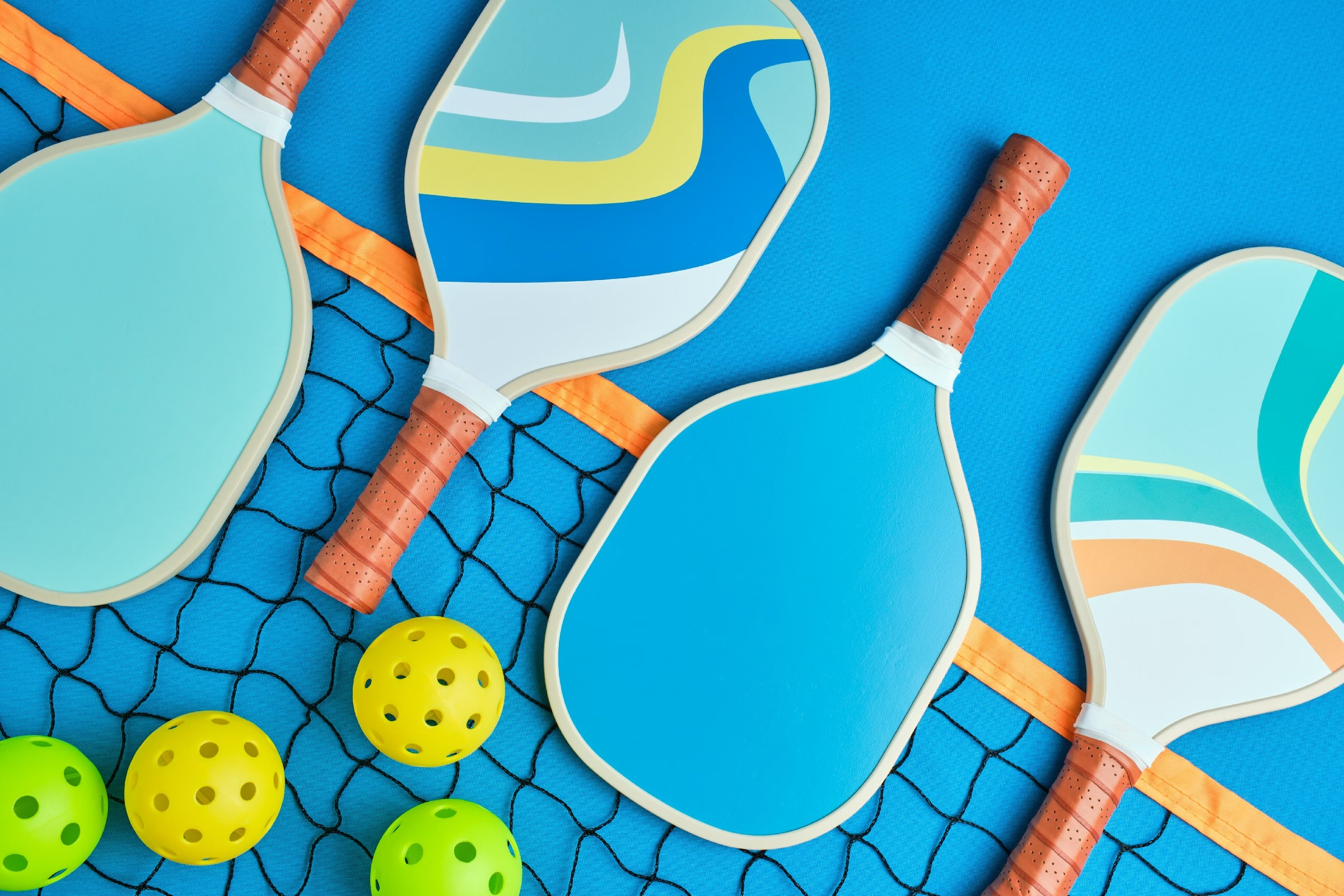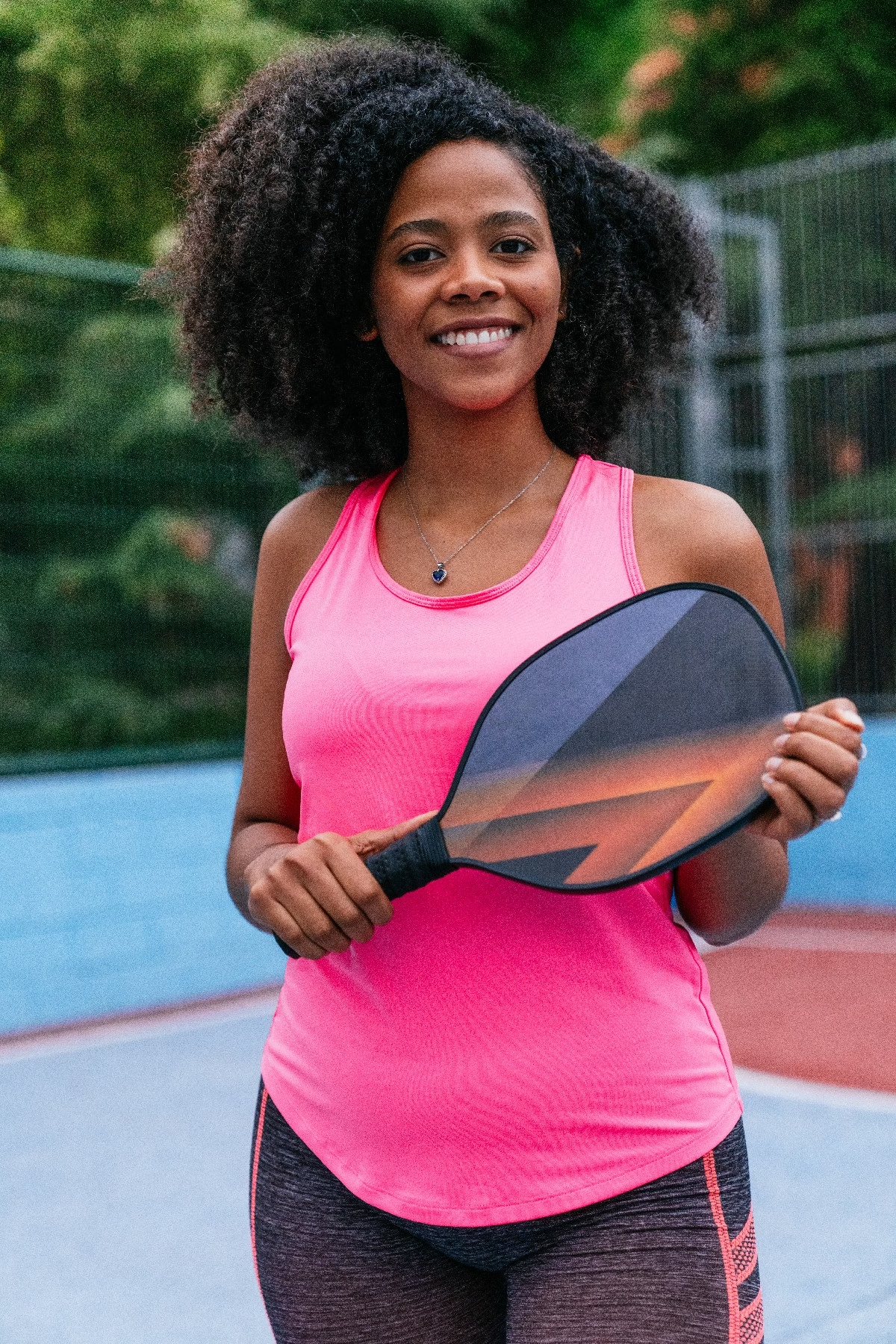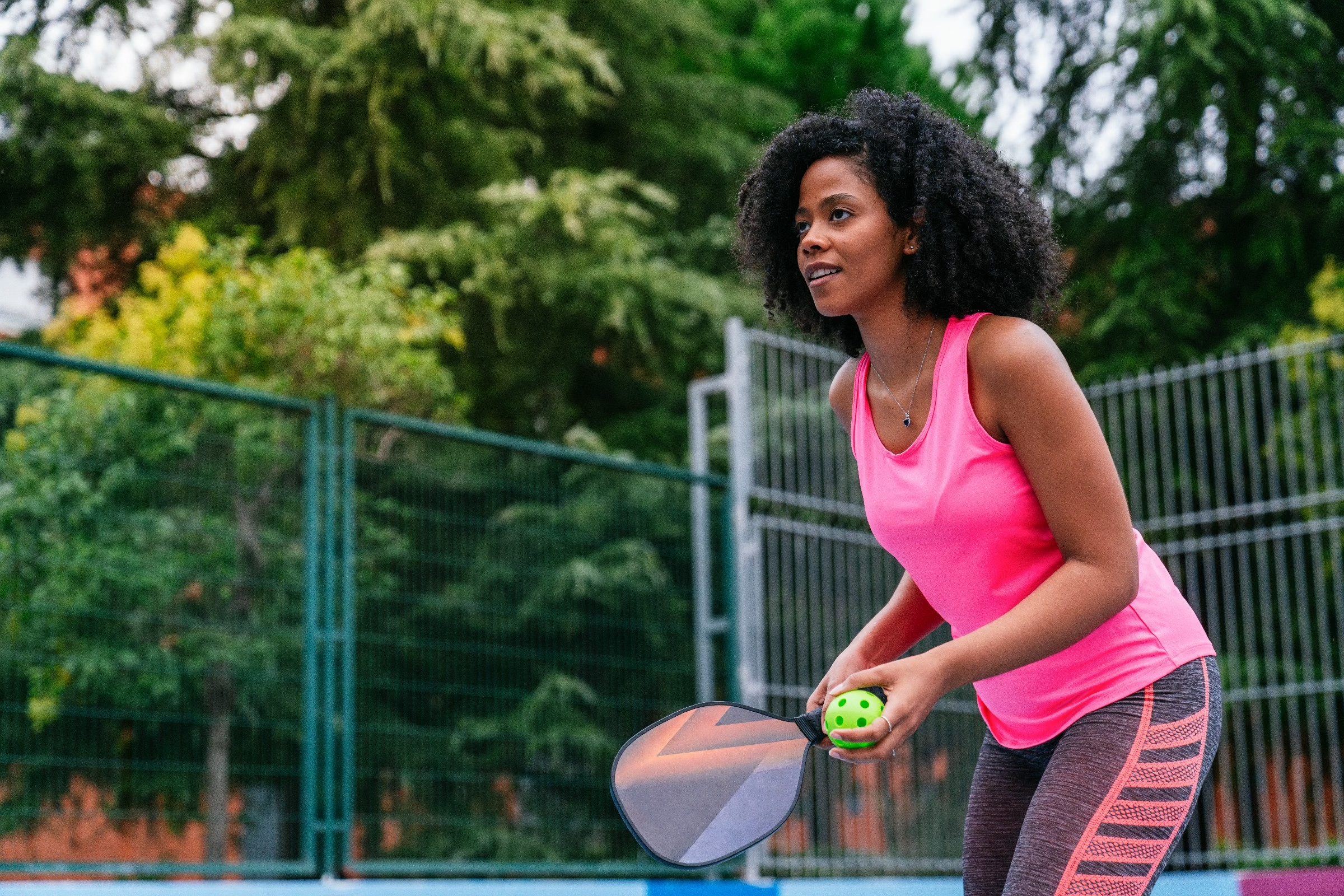Blog
what size are pickleball paddles

What Size Are Pickleball Paddles? A Guide to Finding Your Perfect Match
as the sun shines brightly on the courts, the rhythmic thwack of pickleball paddles hitting the ball echoes through the air, drawing players of all ages to this rapidly growing sport. But amidst the excitement and dynamic gameplay, one question often arises: what size are pickleball paddles, and how does that size impact your performance on the court? Just like choosing the right racket in tennis or the ideal club in golf, understanding pickleball paddles isn’t just about style; it’s a crucial step toward enhancing your game. In this article, we will explore the various dimensions of pickleball paddles, helping you navigate the selection process to find the perfect fit for your playing style and comfort. Whether you’re a seasoned player or a curious newcomer, let’s delve into the intriguing world of racket sizes, shapes, and their implications on your pickleball journey.
Table of Contents
- Understanding the Standard Dimensions of Pickleball Paddles
- Exploring Paddle Thickness and Its Impact on Gameplay
- Choosing the Right Grip Size for Comfort and Control
- Materials Matter: How Paddle Composition Affects Performance
- The Importance of Paddle weight: Finding Your Perfect Balance
- Customizing Paddle Size to Fit Your Unique Playing Style
- Q&A
- Key Takeaways
understanding the Standard Dimensions of Pickleball Paddles
When delving into the world of pickleball, it’s essential to understand the standard dimensions of paddles, as these can significantly influence gameplay and individual performance. Typically, pickleball paddles are crafted with a width ranging from 7.5 to 8.5 inches. This variance in width allows players to choose a paddle that complements their playing style—whether they favor power or control. The width plays a critical role in how much surface area is available for striking the ball, affecting both precision and maneuverability.
In terms of length, most paddles measure between 15.5 to 16.5 inches. This length provides players with a balance between reach and weight. A longer paddle can offer an extended reach, enabling players to cover more ground, while a shorter option generally enhances control and rapid maneuvering. Additionally, the handle length usually hovers around 4 to 5 inches, which is another vital consideration as it affects your grip and comfort during play.
To give a clearer picture, here is a simple overview of the paddle dimensions:
| Dimension | Range |
|---|---|
| Width | 7.5 – 8.5 inches |
| Length | 15.5 – 16.5 inches |
| Handle Length | 4 – 5 inches |
This understanding of standard paddle dimensions can guide players in making informed choices that enhance their gameplay experience, allowing them to tailor their equipment to their individual skills and preferences.
Exploring Paddle Thickness and Its Impact on Gameplay
When delving into the world of pickleball, one of the intriguing aspects to consider is the thickness of paddles, which can significantly influence a player’s experience and performance on the court. The standard thickness for pickleball paddles generally ranges from 0.5 inches to 0.75 inches, but there are variations that can cater to different playing styles.Thicker paddles tend to provide a larger sweet spot and can add power to your shots, allowing players to hit the ball with greater force. Conversely, thinner paddles frequently enough provide better control, enabling more precise placements and finesse shots, appealing to players who prioritize technique over sheer power.
different paddle thicknesses also contribute to the overall weight and balance of the paddle, which ultimately affects your gameplay. A heavier paddle might provide stability and allow for powerful strikes, but it can also lead to a faster fatigue rate, especially during extended matches. Lightweight paddles, on the other hand, can enhance maneuverability, making them preferable for quick volleys and reaction plays. The choice between a heavier and a lighter paddle often comes down to personal preference, play style, and the player’s physical condition. The right balance is crucial for optimal performance.
Here’s a quick comparison to help highlight the pros and cons of varying paddle thicknesses:
| Paddle Thickness | Advantages | Disadvantages |
|---|---|---|
| Thinner (0.5 – 0.65 inches) |
|
|
| Thicker (0.66 – 0.75 inches) |
|
|
Choosing the Right Grip Size for Comfort and Control
When selecting the ideal grip size for your pickleball paddle, comfort and control are paramount. An appropriate grip size allows you to maneuver the paddle with ease, minimizing strain during long matches. A grip that is too big can hinder your ability to squeeze firmly, while one that’s too small may slip during play, leading to mishits. Always consider factors such as your hand size and the type of playing style you prefer when making this crucial decision.
To find the perfect fit, measuring your grip size is a straightforward process. You can follow these steps:
- Measure the length: Use a ruler or measuring tape to measure from the tip of your ring finger to the base of your palm.
- Use a chart: Compare your measurement against standard grip sizes.
- Try different paddles: It’s always best to hold paddles with various grip sizes to see which feels most agreeable.
For quick reference, here’s a simple table illustrating the relationship between hand sizes and grip sizes:
| Hand Size | Recommended Grip Size |
|---|---|
| Small (up to 6.5 inches) | 4″ – 4 1/8″ |
| Medium (6.5 – 7.5 inches) | 4 1/4″ – 4 3/8″ |
| Large (7.5 inches and above) | 4 1/2″ – 4 5/8″ |
Materials Matter: How Paddle Composition Affects Performance
When it comes to pickleball paddles, the composition plays a pivotal role in shaping the game. Different materials such as wood, polymer, and composite blends significantly impact aspects like power, control, and durability. While wooden paddles are typically heavier,they offer a solid feel for beginners and are often more affordable. Conversely, polymer paddles, known for their lightweight nature, facilitate swift movements and quick reactions on the court.
Consider the following key materials and their influence on performance:
- Wood: Offers a classic, sturdy feel, ideal for beginners.
- Polymer: Lightweight and responsive,perfect for players seeking agility.
- Composite: A blend of materials, providing both durability and excellent ball control.
Additionally, the thickness and type of core used in paddles can vary widely, affecting everything from ball impact to vibration dampening. As an example, a paddle with a thick core tends to absorb more shock during play, offering a softer touch but potentially sacrificing some power. Conversely, thinner cores can generate a pop that enhances your drive but may lead to increased vibration. Here’s a breakdown of some popular paddle cores:
| Core Type | Impact on Performance |
|---|---|
| Polymer | Balanced power and control, ideal for most players. |
| Nomex | Firm and powerful, grate for aggressive play styles. |
| Aluminum | Lightweight with a unique feel, often preferred for recreational play. |
The Importance of Paddle Weight: Finding Your Perfect Balance
When selecting a pickleball paddle, one of the most critical factors to consider is its weight. Paddle weight can significantly affect your gameplay, influencing both your power and control on the court. Here’s a breakdown of how weight can impact your performance:
- Lightweight Paddles (6-7.5 oz): These paddles provide excellent maneuverability and allow for quicker reaction times, making them ideal for players who rely on speed and finesse.
- Medium-weight paddles (7.5-8.5 oz): A balanced choice for many players, these paddles offer a blend of power and control, suitable for diverse playing styles.
- Heavy Paddles (8.5-9.5 oz): Players looking for more power might prefer these paddles, as the increased weight can definitely help generate stronger shots. However, they may sacrifice some speed and agility.
Finding the right weight for your paddle is essential for achieving your desired balance between strength and speed. Some players naturally gravitate towards heavier paddles, while others may feel more comfortable with lighter options. Ultimately, the choice depends on your playing style and physical capabilities. To help you visualize this range, here’s a simple table depicting various paddle weights and their corresponding effects:
| Paddle Weight | Performance aspect | Best for: |
|---|---|---|
| 6-7.5 oz | Maneuverability | Fast-paced players |
| 7.5-8.5 oz | Balance of power and control | All-around players |
| 8.5-9.5 oz | Powerful shots | power hitters |
As you experiment with different paddle weights, pay close attention to how they feel during play. the right paddle not only boosts your confidence but also enhances your overall game. Remember, it’s not only about the weight; comfort and handling shoudl also play a significant role in your decision-making process. Choose wisely, and you’ll find the perfect paddle that resonates with your style, elevating your pickleball experience.
Customizing Paddle Size to Fit Your Unique Playing Style
When diving into the world of pickleball, selecting the right paddle size can significantly enhance your performance and enjoyment of the game. Each player has a distinct style that requires specific characteristics in their paddle. A careful analysis of your playing habits, strengths, and weaknesses is crucial when customizing your equipment. Consider factors such as your grip comfort, swing speed, and control preferences. A paddle that aligns with your unique playing style can make all the difference in your game.
In general, paddle sizes can be categorized into three key dimensions: length, width, and weight. The dimensions not only influence the feel of the paddle but also have a direct impact on maneuverability, strike accuracy, and power. Here’s how you can think about customizing each aspect:
| Dimension | Customization Tips |
|---|---|
| Length | Choose longer paddles for reach and extended leverage,but be mindful of increased weight. |
| Width | Broader paddles offer more surface area for hitting but can compromise speed and maneuverability. |
| Weight | Lighter paddles enhance control and swing speed, while heavier paddles can provide additional power. |
Essentially, balancing these elements to suit your natural playing style is your key to mastering the game. Players who rely on finesse and quick reactions might prefer a lighter, smaller paddle, while those who value power plays might benefit from a heavier option with a larger hitting surface. Ultimately, experimenting with different paddles and sizes during practice sessions can provide insight into what feels most comfortable and effective for your personal style. Don’t hesitate to customize and tweak untill you find your perfect match!
Q&A
Q&A: What Size Are Pickleball paddles?
Q: What is the standard size for pickleball paddles?
A: The standard width for pickleball paddles typically ranges from 7.5 to 8.5 inches, while the length can be anywhere from 15.5 to 16.5 inches, including the handle.While these dimensions create a comfortable blend of power and control for most players, enthusiasts often experiment with different shapes and sizes to suit their individual playing styles.
Q: Are there specific dimensions for children’s paddles?
A: Absolutely! Children’s paddles are generally smaller and lighter to accommodate their smaller hands and reduced strength.These paddles usually measure anywhere from 6.5 to 7.5 inches in width and around 14 to 15 inches in length. The lighter weight helps young players develop their skills without being overwhelmed by cumbersome equipment.
Q: Does the size of the paddle affect gameplay?
A: Yes, the size of a pickleball paddle can significantly influence gameplay! A wider paddle offers a larger hitting surface, which is great for beginners who are still refining their hand-eye coordination. Conversely, a narrower paddle provides more control and finesse, appealing to advanced players looking for precision in their shots.
Q: how does paddle weight factor into size and performance?
A: Weight and size are intertwined in pickleball paddles. most paddles weigh between 6 to 14 ounces. Heavier paddles can deliver more power but may be harder to maneuver, while lighter paddles allow for quick reactions and swift wrist movements.Players must find a balance between size and weight that complements their style, whether they prefer power or agility.
Q: What about the grip size of a pickleball paddle?
A: The grip size is critical! Most paddles have grip diameters ranging from 4 to 4.5 inches. A grip that is too large or too small can affect comfort and control, leading to less effective shots. Players should measure their hand size and try different grips to find what feels best,ensuring a seamless connection between player and paddle.
Q: Are there regulations regarding paddle size in official tournaments?
A: Yes, there are regulations in official pickleball tournaments. According to the USA Pickleball Association, paddles cannot exceed 24 inches in total length, including the handle, and 10.5 inches in width. The thickness is also limited to 1.5 inches. These guidelines ensure a level playing field while allowing diversity in paddle styles within those parameters.
Q: How do I choose the right paddle size for my skill level?
A: Choosing the right paddle size is all about your comfort and playing style. Beginners may prefer wider paddles for more forgiveness, while intermediate and advanced players might opt for more specialized designs that suit their strategic approach to the game. Visiting a local store to test out different options or seeking advice from experienced players can help in making the perfect choice.
Q: Can I customize my paddle size?
A: Yes! Some manufacturers offer customizable paddles where you can select size, weight, and grip preferences. Additionally, you can modify existing paddles by changing grips or using paddle covers to adjust the feel. However, keep in mind that modifications should align with tournament regulations if you plan to compete.
Understanding paddle sizes is key to elevating your pickleball game, whether you’re a casual player or a seasoned competitor. The right fit can enhance your performance and add to the joy of playing!
Key Takeaways
As we’ve explored the diverse world of pickleball paddle sizes, it’s clear that there’s no one-size-fits-all solution. From the power-driven players who might favor a larger face for maximum reach, to those who excel in finesse with a more compact and controlled design, each handle and surface size offers its own unique advantages. Much like the game itself, the choice of paddle is personal and should reflect your individual style and playing strategy.
As you embark on your own pickleball journey,consider testing various sizes and styles to discover what resonates with your game. After all,the right paddle is not just a tool; it’s an extension of your skill and passion on the court. So, gather your paddles, step onto the court, and embrace the thrill of the game—because in pickleball, every swing is an opportunity, and the right size can make all the difference.Happy playing!

